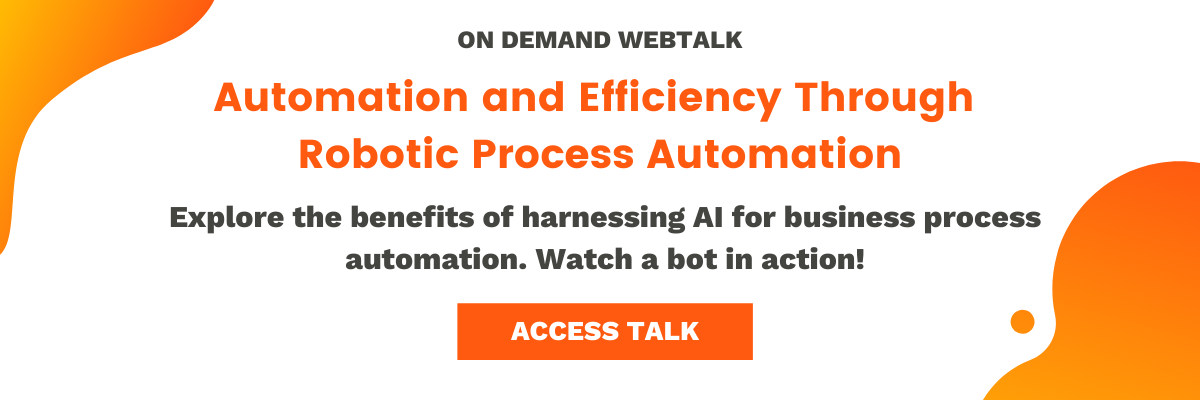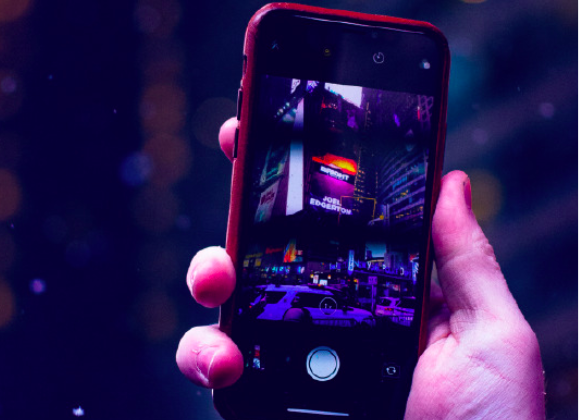As mobile users continue to grow, so does the app market. Learn how to make your app stand out by taking advantage of app personalization through AI.
Using AI for Mobile Personalization Apps
The app store is a big space. As the mobile market expands its influence, climbing as one of the most profitable sectors for businesses, the demand to leave an impact increases. There are well over 1.5 million apps independently on both the App Store and Google Play. It’s an ocean of competition, and the only way to climb the ladder is to make a big splash.
App personalization is the calling that makes that possible. There’s no market for one size fits all experiences on apps, they lack the appeal necessary to entice user retention. Even if you’re able to get your app installed, there’s no guarantee that they’ll stick around past the first time they open it. 65% of users will never open the app twice, and it’ll end up being deleted if their experience is a negative one.
By designing apps to cater to specific user needs, the likelihood that your app will find a crowd that makes extensive use of your app skyrockets. Phone users only use around 15 apps on their phones every week, meaning every app serves a specialized purpose. Being among those 15 opened apps means subscribing to the mobile app personalization stratagem.
User retention is one of the foremost priorities to consider in developing a successful app. It’s not an easy task to knock down, but it can be made easier with the right resources. AI is filling a growing niche for software developers everywhere, tackling problems that may be otherwise hard to address with traditional code.
The are many business applications for artificial intelligence, and AI technology has the capacity and potential to make your app stand out from the crowd, personalizing each user’s experience through accessibility, functionality, ease of use, and performance.
How AI Provides Personalized Content
So let’s debrief on what AI brings to the table.
Broken down to its base components, an AI program is a bundle of algorithms delicately stitched together to analyze data and develop original solutions from that data. There is no singular type of AI that exists in the modern age, rather it functions as an umbrella term containing a variety of unique algorithms with separate intended purposes.
The vast applicability inherently presented by AI technology makes it one of the most versatile resources available. That versatility translates into value, as AI can be created in virtually any different form for unique situations. Whether you’re adapting it to identify facial patterns or manage marketing ploys to accurately reflect changes in popular culture, there’s an AI program for the job.
For the case of mobile app development, the most popular form of AI is centered on the user. That is, of course, the whole point of applying AI in this context: to create personalized content. As the average mobile device user accesses and interacts with your app, data is transmitted and translated through your app’s AI. This is hereby how AI is able to learn about the user.
App personalization is a one-to-one scale concept, in that each user’s experience with your mobile app is uniquely suited to their tastes. Learning specifics about each app user interchangeably affects how the app caters to their needs, at a rate that’s far more efficient than can be done manually. From measuring the personality of the market segment to the individuality of a single person, AI technology processes and quantifies the sort of detail to attention that drives user retention rates.
With enough data, AI can learn user behavior, preferences, and other patterns that allow it to fully understand the user of the app. This data is filtered through a variety of subtle minutiae that the average user isn’t even aware of while they use the app. Everything is useful and can be applied to a better experience, including some of the following data factors:
- Time spent in each part of the app
- Time of day the app is accessed
- Which parts of the app are used by frequency
- The type of content a user spends more time on
- Which notifications a user is more likely to respond to
Monitoring human behavior is the quickest, most efficient method to ensuring your users will return on a regular basis. What can be derived from how your users interact with your app informs how your app, in turn, interacts with them.
Time spent in each part of the app
Where does User A spend the majority of their time while using your app? This is as much an indication of their interests as well as what they are primarily going to be using your app for. It may provide other functions, but those are irrelevant when it comes to this user in particular. Therefore, personalizing this experience means catering that specific portion of the app to the user, including notifications, ease of access, and function that directly correlates to that part of the app’s function.
Time of the day the app is accessed
When someone uses your app is as important as any other behavioral data that can be gleamed. Most of us work 9 to 5 jobs, but there are admittedly some workplaces that are more accommodating to personal time than others. An employee at one company may find time to use your app during the day, while another employee at a different company can’t. You aren’t able to sweep the habits of an entire demographic under a single rug.
The times at which people use your app indicate when they’re, on average, available. No one wants their phone blowing up with notifications during a meeting, nor do they want to be woken up by a buzzing phone at 3am. Humans are creatures of habit, and by learning about those habits your app can accommodate your individual user base.
Which parts of the app are used by frequency
This again digs back into which parts of the app are most important to your user. Prioritizing these sections of the app for accessibility devote relevance to each user’s unique experience. The more frequently each part of the app is used, the more value those portions have.
The type of content a user spends more time on
Say you have a news app. If a user tends to spend more time on sports articles, then the logical takeaway is that your app should promote more sports-related content for them to enjoy. The same can be applied for politics, global events, charities, crime, and so on. By quantifying the type of content the user spends the most time on, you can catalogue their interests and directly appeal to the user by promoting relevant content.
Which notifications a user is more likely to respond to
Being bombarded with push notifications that the user isn’t interested in significantly increases the chances they’re going to drop your app. Users want to be notified about things that they’re interested in. Anything beyond that borders the line of obnoxious and superfluous.
Keep in mind that these criteria for data collection are a mere fistfull of possible actions that can be monitored. Broadening the scope for personalized apps can account for hundreds of data points, no matter how innocuous a particular data set may seem.
Alternatively, what may prove just as important as the information being gathered in the information not being gathered. That is to say, you may see how frequently your users are using particular sections of the app, but what about the ones being ignored? If large portions of your user base aren’t interacting with certain parts of your app, perhaps you should be asking if there’s anything wrong with it.
The added beauty is the speed at which these AI programs can compile, analyze, and act on gathered information. Were you to place a human at the controls of even a single user, they’d be hard pressed to adapt and conform to their attention niche adequately. Through the use of algorithms specifically designed for this brand of work, any app can effectively optimize itself for each user.
What AI App Personalization Can Do
The transformation from data to results is the true indicator of how effectively AI app personalization can change the landscape of your mobile footprint. There can be no definitive final product that perfectly accounts for every user. That’s a good thing, humans are always adapting and changing, and AI is challenged with continually formatting the app to new specifications.
AI personalization can result in several benefits, a few of which we’ll mention among the following categories.
Curated Content
The first and most obvious benefit provided with the assistance of AI technology is curated content. We’ve addressed it in so many words, but as the frontrunner of reasons why AI personalization is so important, it can’t hurt to hammer the point home a little bit more. An AI can pull up relevant content that a user will like by following the trends the user has set. The more the AI learns about the user, the more easily and effectively it can draw on its learned material for better content pushing.
Personalized Notifications
Personalized notifications are a uniquely fascinating feature made possible through learning technologies. Rather than sticking to the same “to whom it may concern” notifications commonly seen, AI are capable of sending personalized notifications targeting each user directly. By learning which notifications result in opening the app and when the app is used, AI can create targeted notifications that a user will be more inclined to respond to.
Improving Developer Support
Feedback isn’t always directly provided by the consumer. Developers are able to learn just as much about what’s underperforming about their apps by reviewing gathered data from AI programs. By learning which parts of an app are underused or not implemented correctly, developers can improve the app and improve the quality for every user.
Takeaways
Ai technology is an incredibly versatile tool that’s changing the way modern apps are designed. Mobile apps don’t have to be static constructs churning away unless compelled by a higher, software developer-like force. Through the use of AI, they can be reactive, malleable, adaptive, learning pieces of technology that actively work to increase the user retention rate. This is known as app personalization.
A concoction of algorithms bound together to build the infrastructure of an AI program are best at gathering information quickly. This information ranges from anything and everything that occurs within the bounds of the app, all dependent on how the user interacts with it. By analyzing this gathered information, the AI can then act on it, essentially attuning its machinations to fit the preferences of the user.
App personalization results in a number of potential benefits. From curated content to personalized notifications to improved developer support, the results of a single AI program’s hard work can position a single app to cater to countless individuals, each having their own unique experience. The audience’s specific needs can be met through what ultimately amounts to a clever conglomeration of ones and zeroes.
If you’re interested in learning more about how AI technology can benefit your business’ mobile app, you may want to peruse this iTexico article: How AI Chatbots Can Improve Your Business.







Post Your Comment Here